When I first picked up a paintbrush, I felt a mix of excitement and nerves. I knew I wanted to make something beautiful, but I didn’t know where to begin or what to paint. Canvas painting can seem tough, especially if you’ve never tried it before, but trust me—creativity is for everyone, no matter your skill level or past experience. If you’re ready to start exploring your artistic side, this guide will give you simple and fun canvas painting ideas you can actually do at home.
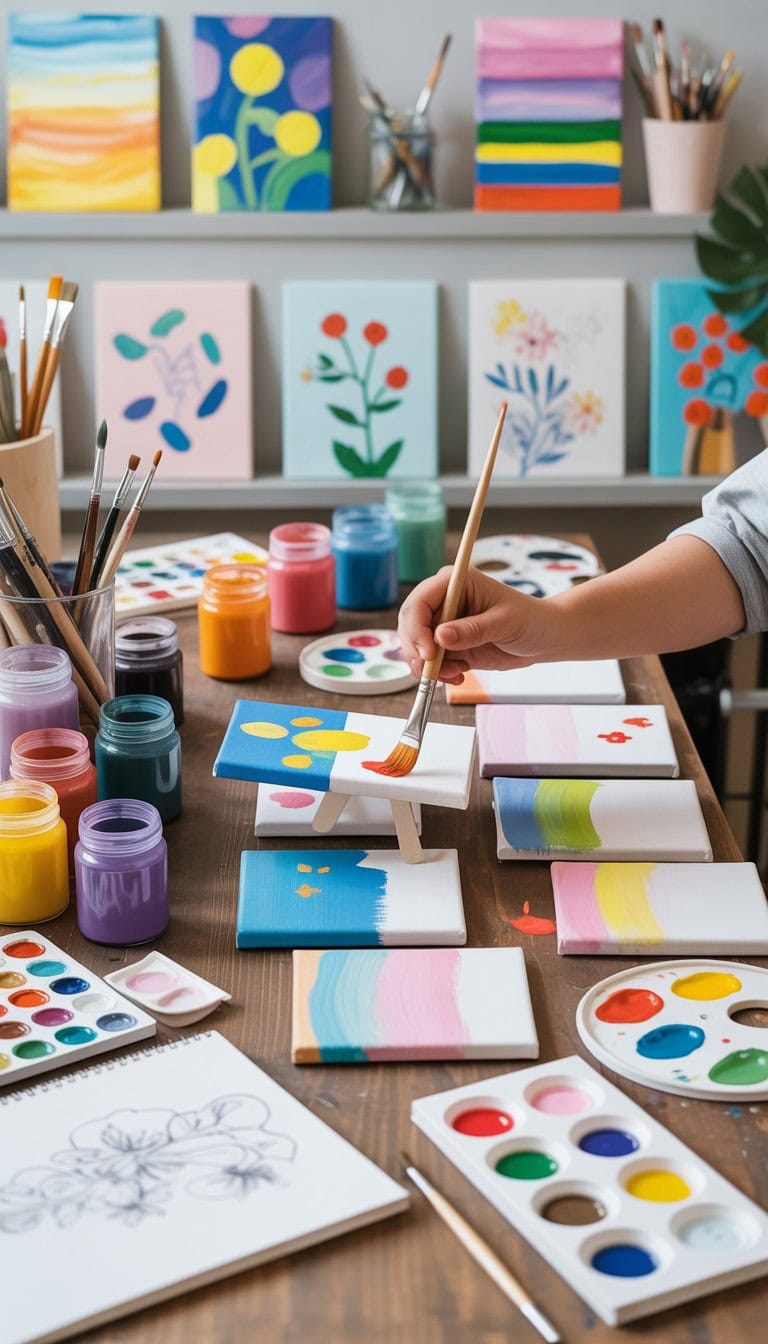
Painting is a great way to unwind and express what’s in your heart. It lets me turn a blank space into something colorful and personal, and it can do the same for you. Whether you’re hoping to make art for your wall, a cozy gift for a friend, or just relax after a long day, grabbing a canvas and trying new ideas is a step toward making your own kind of magic.
Sunset Silhouette Landscape
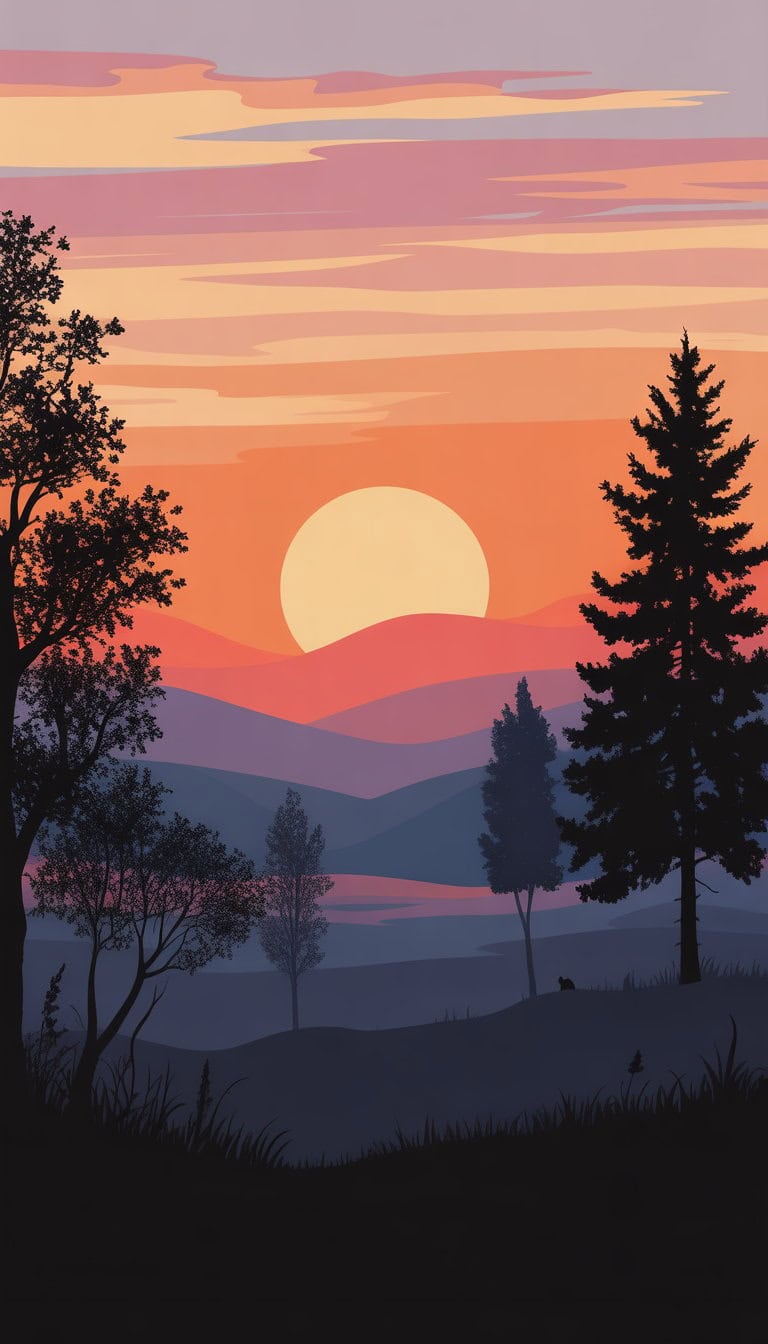
I love painting sunset silhouette landscapes because they are simple but look very beautiful. I start by blending warm colors like orange, pink, and yellow for the sky. Watching the colors mix is relaxing and makes each painting unique.
Once the background is dry, I use black paint to add simple shapes like trees, birds, or grass. The dark silhouettes stand out against the colorful sunset. I find it fun to try new shapes each time.
Anyone can try this idea. It does not need fancy art supplies or experience. If you want some inspiration, you can watch a sunset silhouette painting tutorial for beginners on YouTube.
Abstract Geometric Shapes
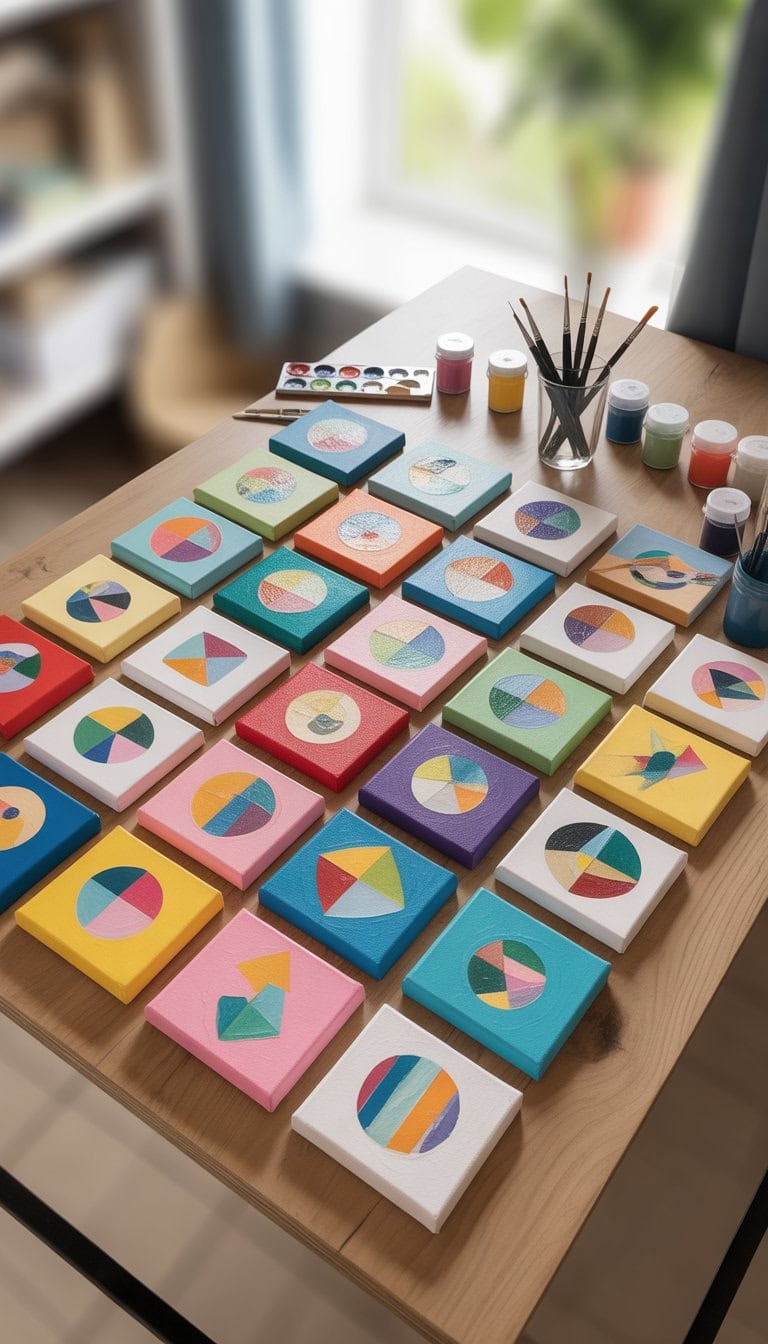
I love using abstract geometric shapes in my canvas art. Shapes like triangles, circles, and squares can turn a simple canvas into something bold and modern. I usually start by taping off areas with painter’s tape to keep my lines sharp.
I pick a few colors that I like and fill in the shapes. It’s fun to mix colors or add gold or metallic paint for a fresh look, like in some geometric wall art tutorials.
Making abstract geometric art lets me experiment without worrying if every edge is perfect. It always feels new and is great for beginners who want to try something different.
Simple Mountain Range
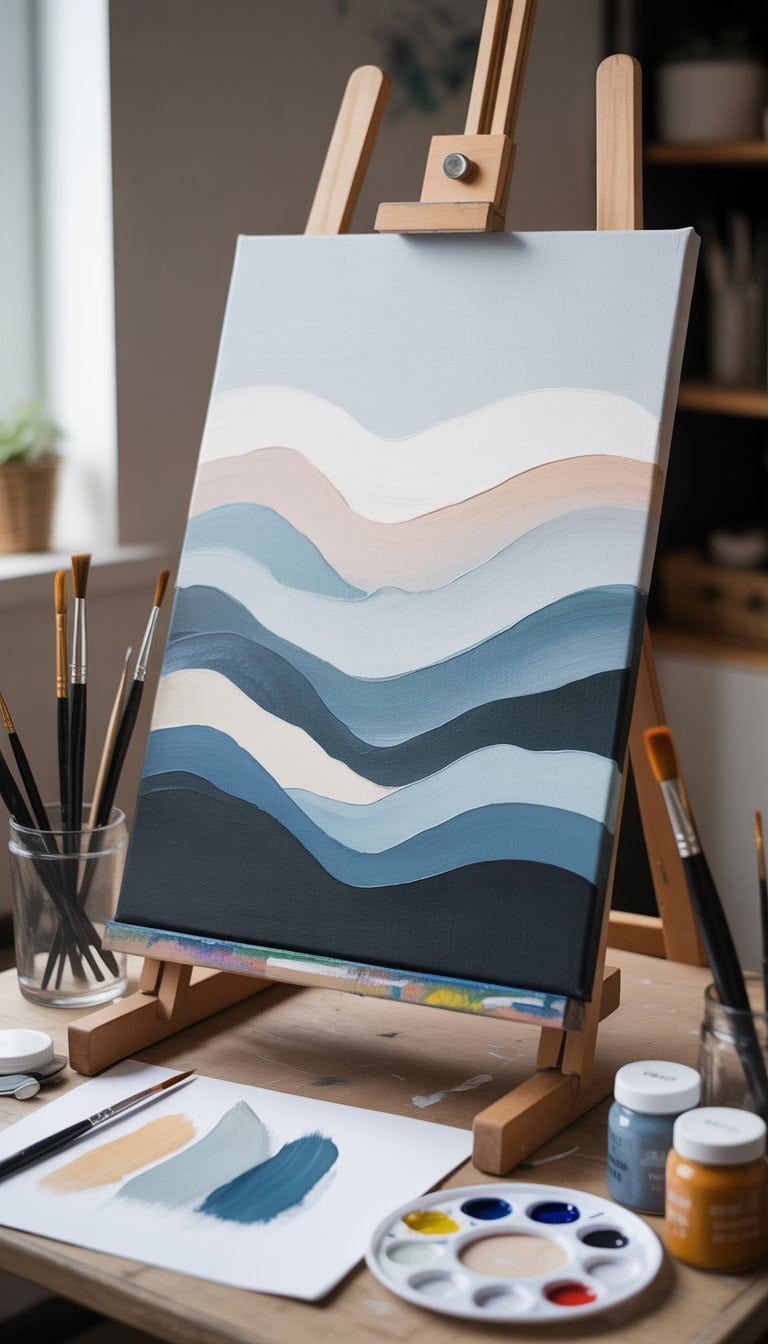
I love painting mountain ranges because they look impressive, but they’re actually easy to make. I start with a light color at the top of the canvas and blend downward, making the sky softer as I go.
Next, I use a darker shade to shape the main peaks. Sometimes I add a little white to make snow caps. It makes the mountains pop without needing lots of details.
Using a wide flat brush helps me get those strong, smooth lines for each mountain layer. I always let each layer dry for a few minutes before adding the next, so the colors stay crisp. If you want a step-by-step video, check out this easy mountain landscape painting tutorial.
Bright Colorful Pineapple
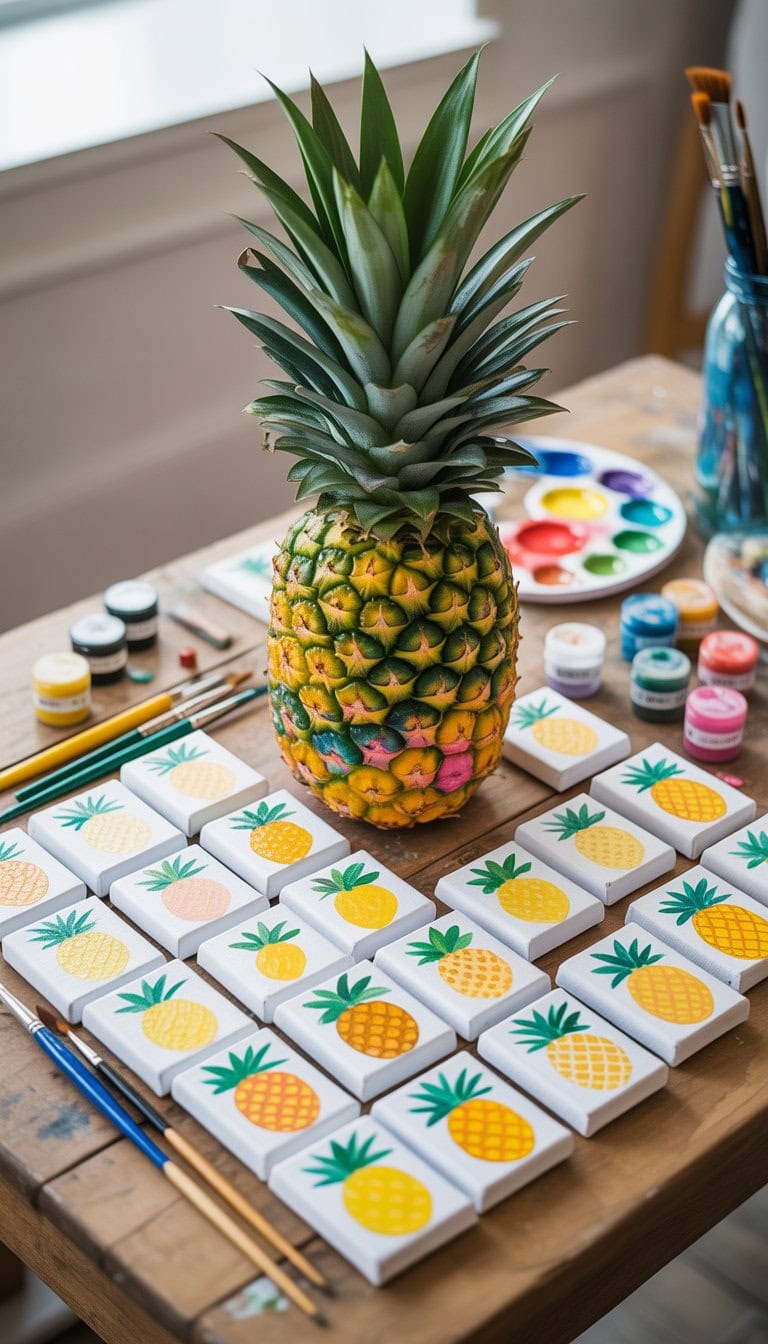
I love painting pineapples because they are simple and bright. Using lots of colors makes each painting unique. I usually start by sketching the basic shape with a pencil.
For the body, I pick yellows, oranges, and sometimes pinks. I use short brush strokes to make the texture pop. The leaves are fun because I can mix greens and blues for a bold look.
I find that pineapples are great practice for blending and shading. If you want some inspiration, check out this easy pineapple painting tutorial for step-by-step help. Painting a pineapple always puts me in a good mood and helps me get creative.
Floral Jar with Wildflowers
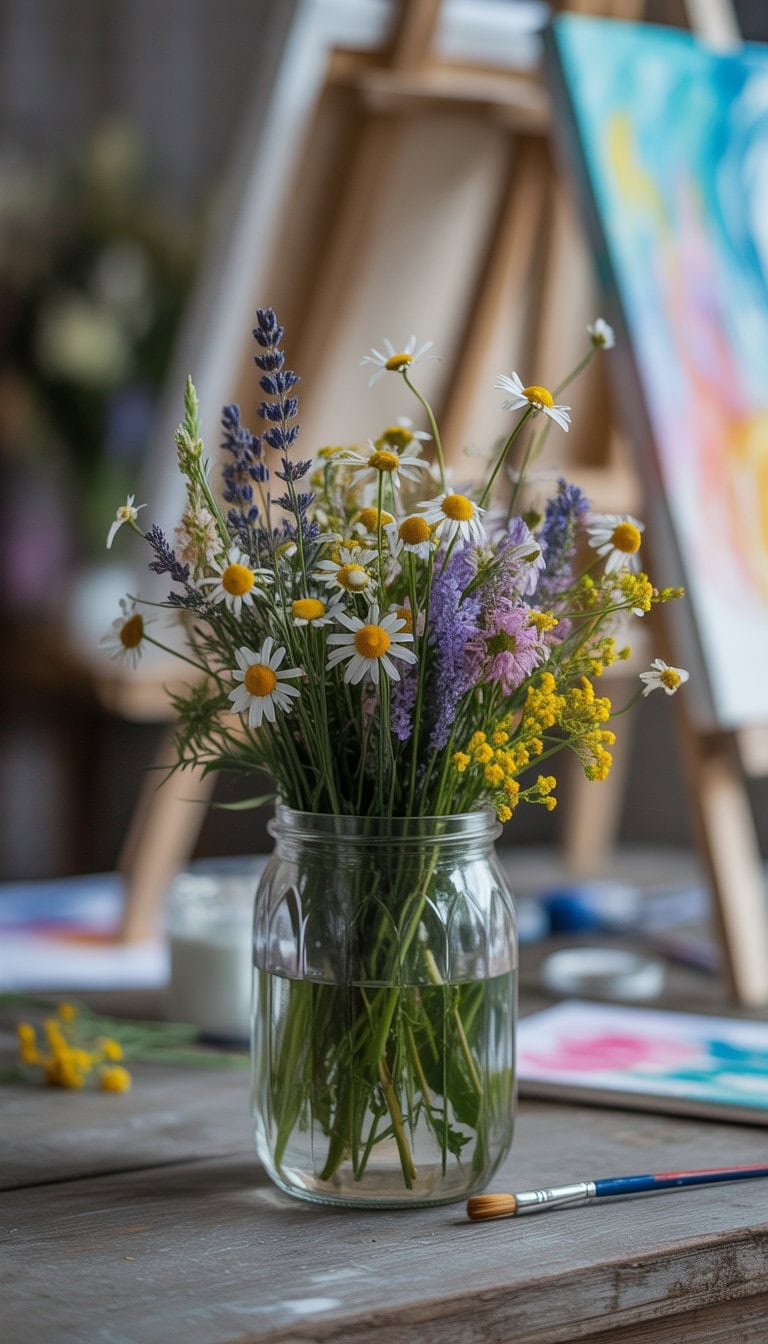
I love painting wildflowers in a mason jar because it feels relaxed and forgiving. The stems and petals don’t have to be perfect, so I can let my brush dance across the canvas.
First, I sketch a simple jar shape and loosely mark where I want the flowers. I focus on adding lots of different flower shapes and colors, mixing in new brush strokes as I go.
If you want a step-by-step guide, you can check out a YouTube tutorial that covers wildflowers in a mason jar. It makes the process simple for beginners.
Adding soft greens and pops of pink or yellow helps the design look fresh and bright. I just have fun with it!
Minimalist Black and White Lines
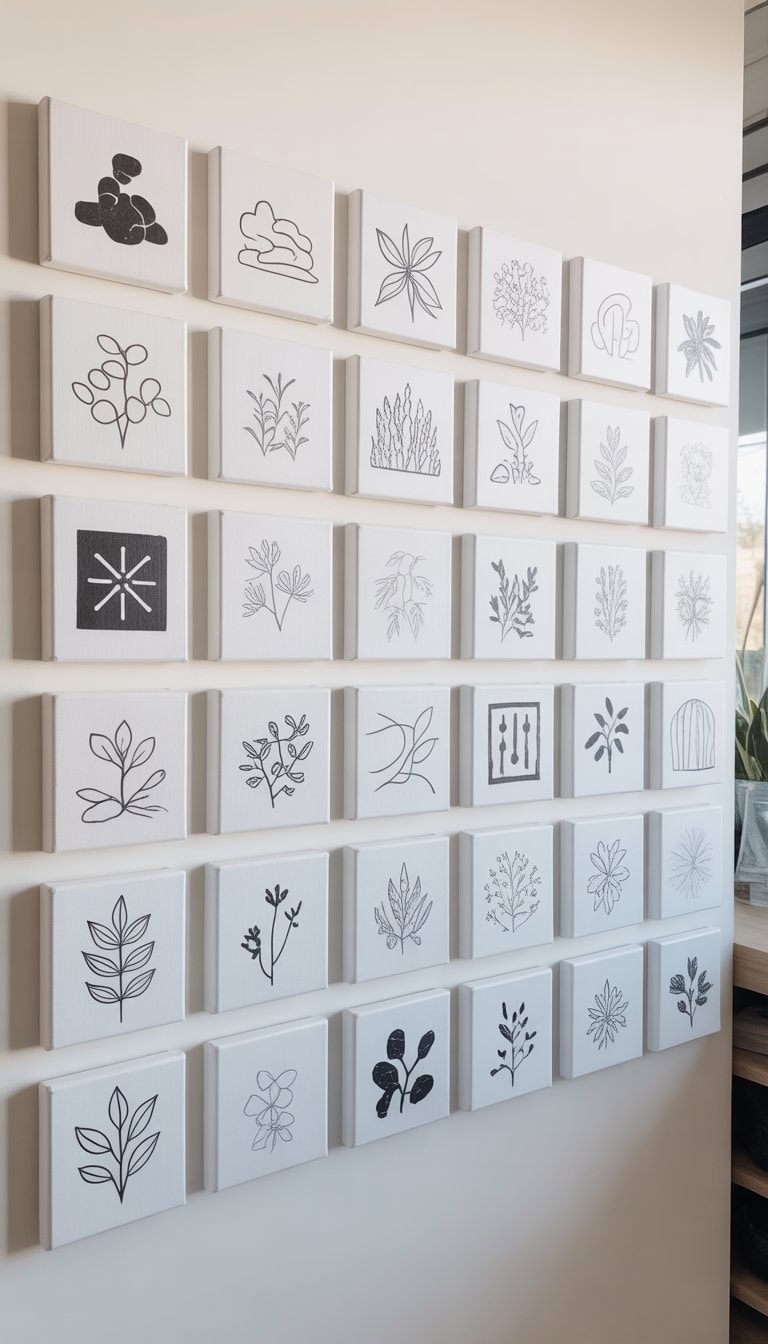
I love how simple black and white lines can look so modern on canvas. Just using these two colors, I can make shapes or patterns that always stand out. Sometimes I use straight lines, and sometimes I play with curved ones.
I don’t worry about making things perfect. Even wobbly or uneven lines add character. Using thick and thin brushes makes the design more interesting.
If you want inspiration, check out some minimalist canvas ideas. There’s no pressure—just paint, and see where the lines take you.
Ocean Waves with Blues and Whites
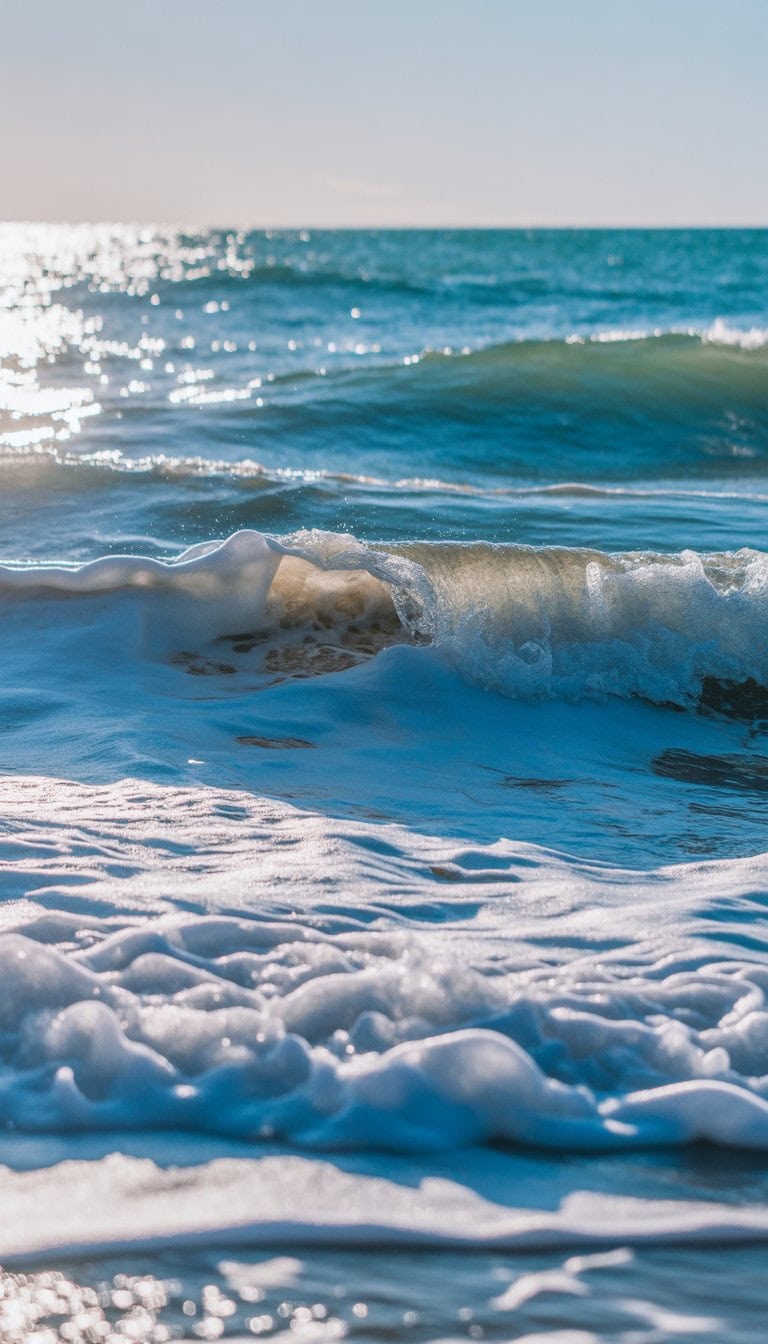
One of my favorite ways to relax and have fun is painting ocean waves. I love using different blues and whites to create the look of moving water. It feels calming and creative at the same time.
To start, I grab a canvas and use a big brush for the base. Adding layers of blue gives a deep ocean effect, while a little white paint makes the waves pop.
If you’re looking for tips, I recommend checking out this easy acrylic wave painting guide. It breaks things down step by step and is great for beginners. Every wave turns out unique, and I always feel proud when I finish.
Cute Cactus in a Pot
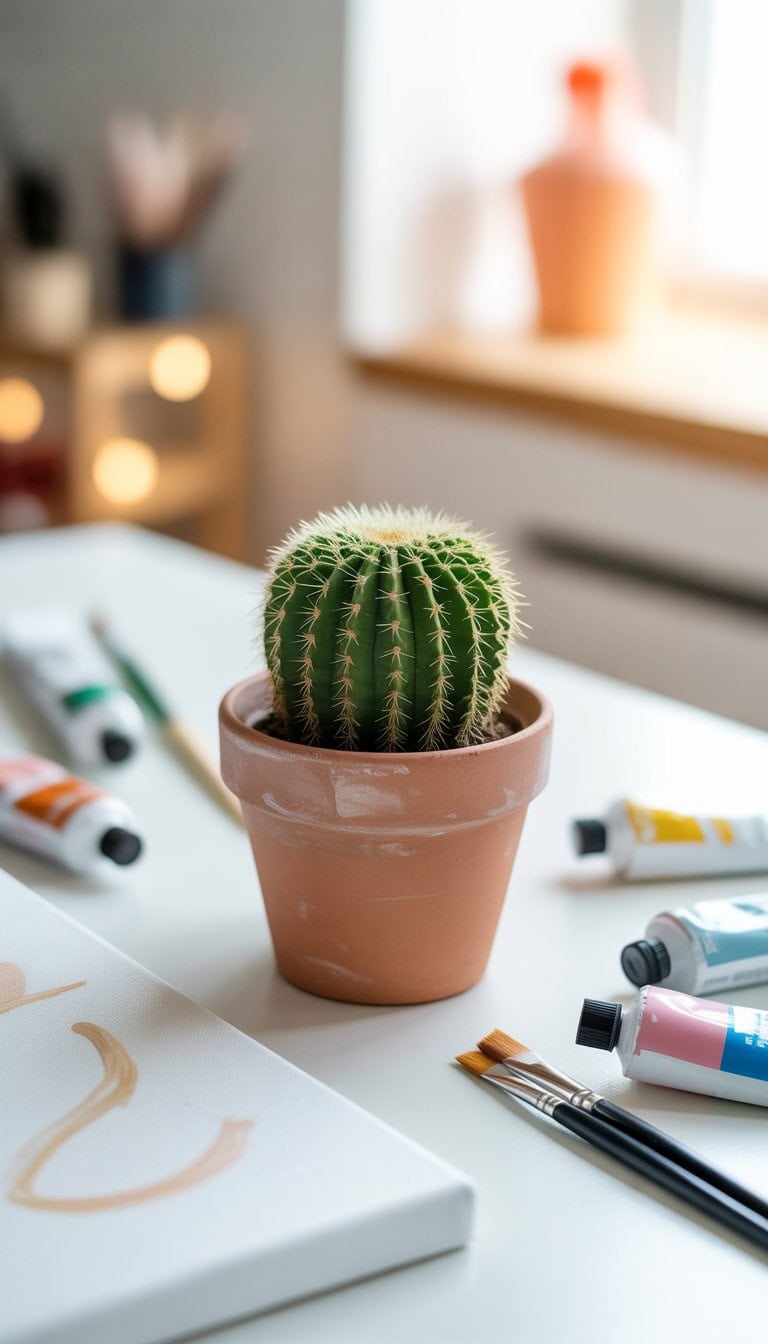
I love painting little cactus plants because they are simple, but they always look fun on my wall. I start by drawing an oval pot and then add a few tall, rounded cacti.
Sometimes I use bright green and pink for flowers, so the painting feels extra cheerful. Using a dark outline helps everything stand out better.
Even if I make a mistake, a cactus painting still looks great. If you want more ideas, I found some cute cactus canvases and painting tips you can try for inspiration at Pinterest.
Galaxy with Stars and Nebula

I love painting galaxies because they bring out my creativity. With just a few colors, I can make swirling stars and glowing nebula clouds. Every galaxy turns out unique.
To start, I pick deep blues, purples, and some bright white for stars. I use sponges or dry brushes to blend the colors. It feels relaxing watching the shapes come together.
When I dot on tiny stars, the painting comes alive. Tutorials like this step by step galaxy acrylic painting make it easy to follow along. Even as a beginner, I always enjoy the result.
Bold Brushstroke Flowers
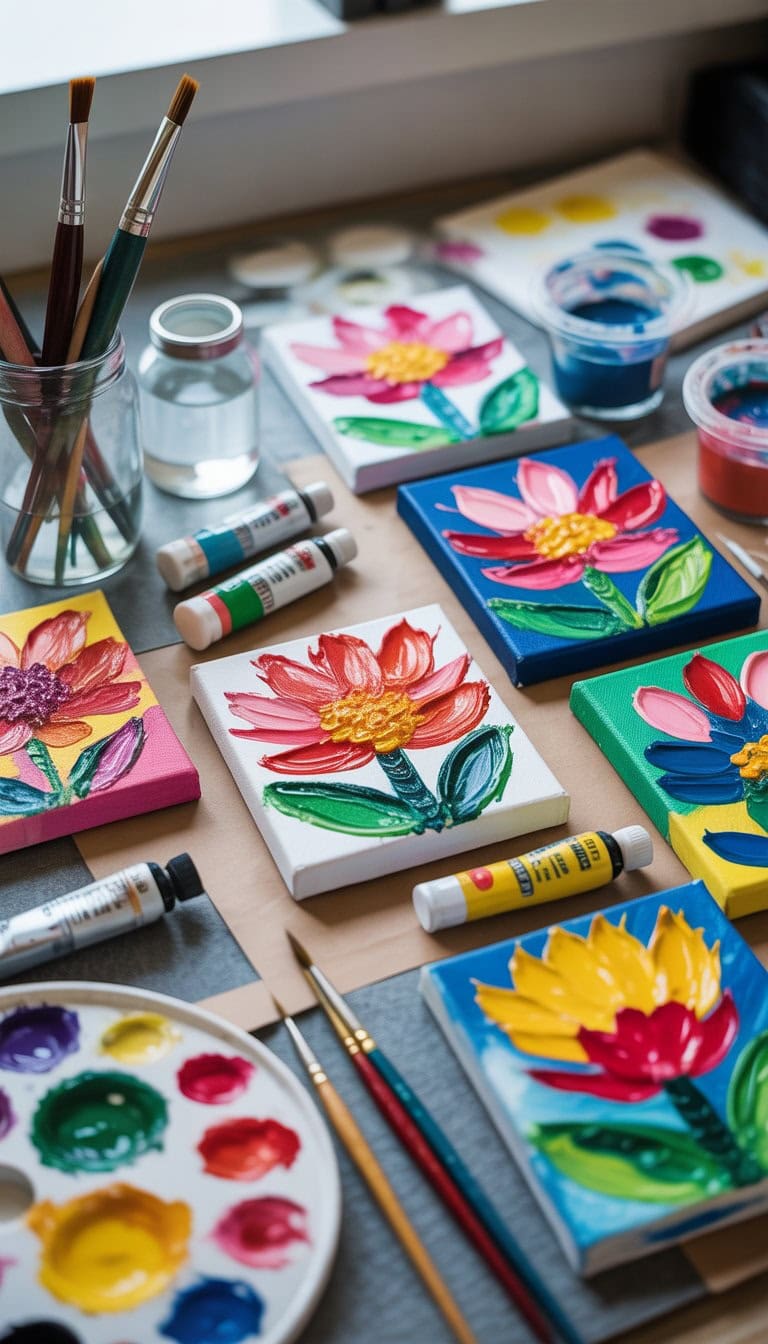
I love painting flowers using bold, colorful brushstrokes. This style lets me use bright paints and simple shapes to show off each bloom.
I grab my favorite acrylics and just let my brush move freely across the canvas. The key is to not worry too much about perfect details.
With every swipe of my brush, I see the flowers come to life. Sometimes I use wide brushes for petals and thin ones for stems. For more ideas, I turn to helpful guides like the easy flower painting ideas for beginners.
Happy Little Trees Inspired by Bob Ross
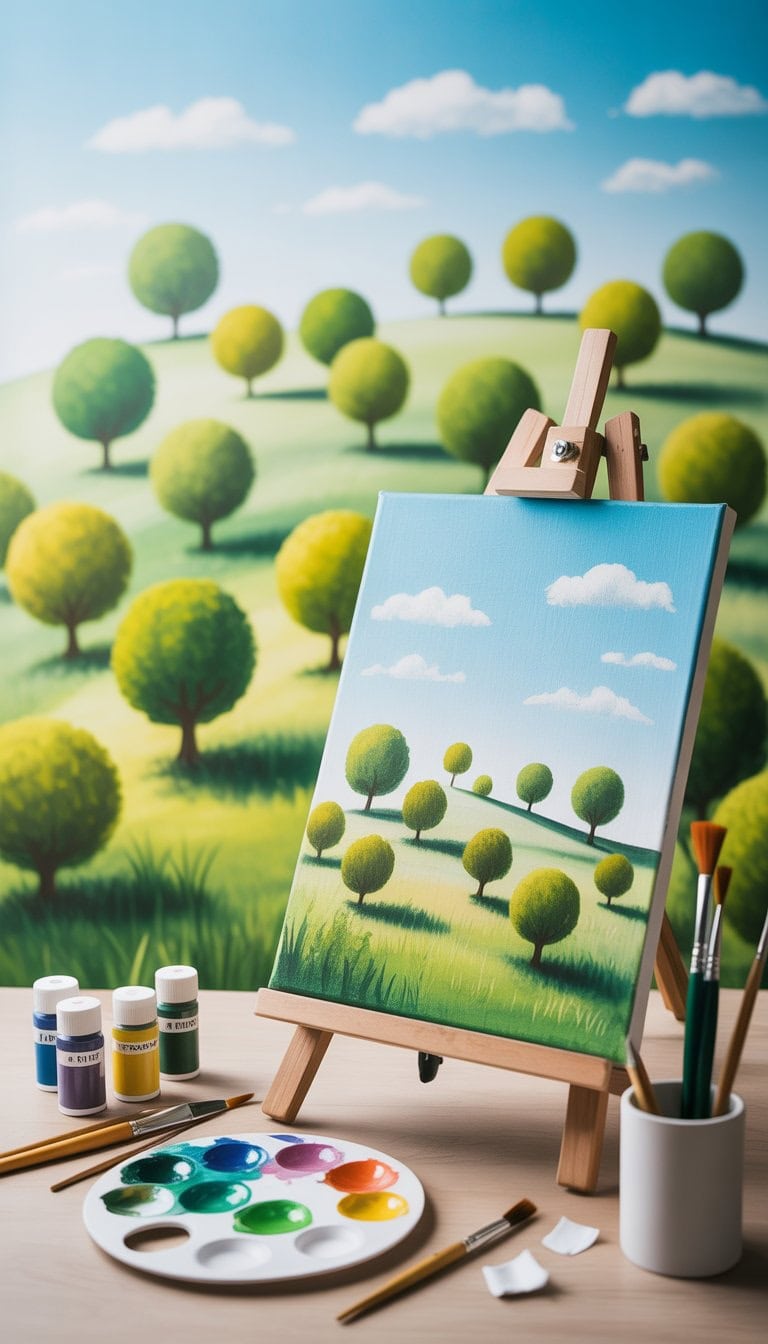
I love painting trees like Bob Ross because it’s relaxing and fun. He made it simple to create “happy little trees” with just a brush and some paint. I always remember how he used a fan brush or a 1-inch brush to shape the leaves with quick, gentle taps.
When I try it myself, I use a mix of dark green and brown to start the basic tree shape. Then, I add lighter green highlights where the sun might hit. If you want to see the technique in action, you can watch Bob Ross’s happy little tree tutorial.
It’s okay if your trees look different each time. That’s what makes each painting special.
Mountain Reflection in Lake
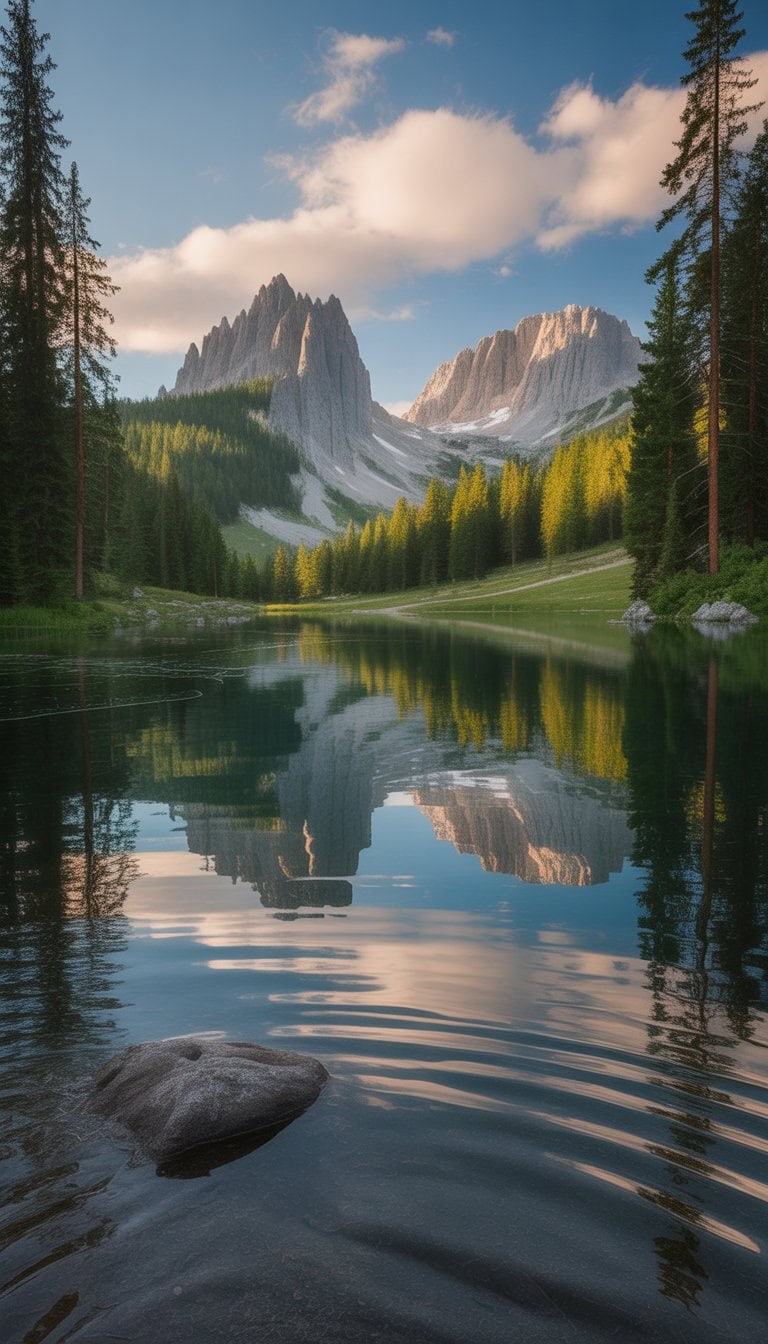
I love painting a mountain scene with its reflection in a calm lake. It always feels peaceful and gives me a chance to blend soft blues and greens. I start by painting the sky, then add the mountain shapes with gentle brushstrokes.
Next, I use the same colors to create the mountain’s reflection in the water below. I lightly blend the reflection for a soft, mirrored effect. This part always feels rewarding.
Adding a few trees or rocks along the shore makes the scene more complete. If you want to see a simple tutorial, I recommend this easy step-by-step mountain lake painting.
Colorful Balloon Bouquet
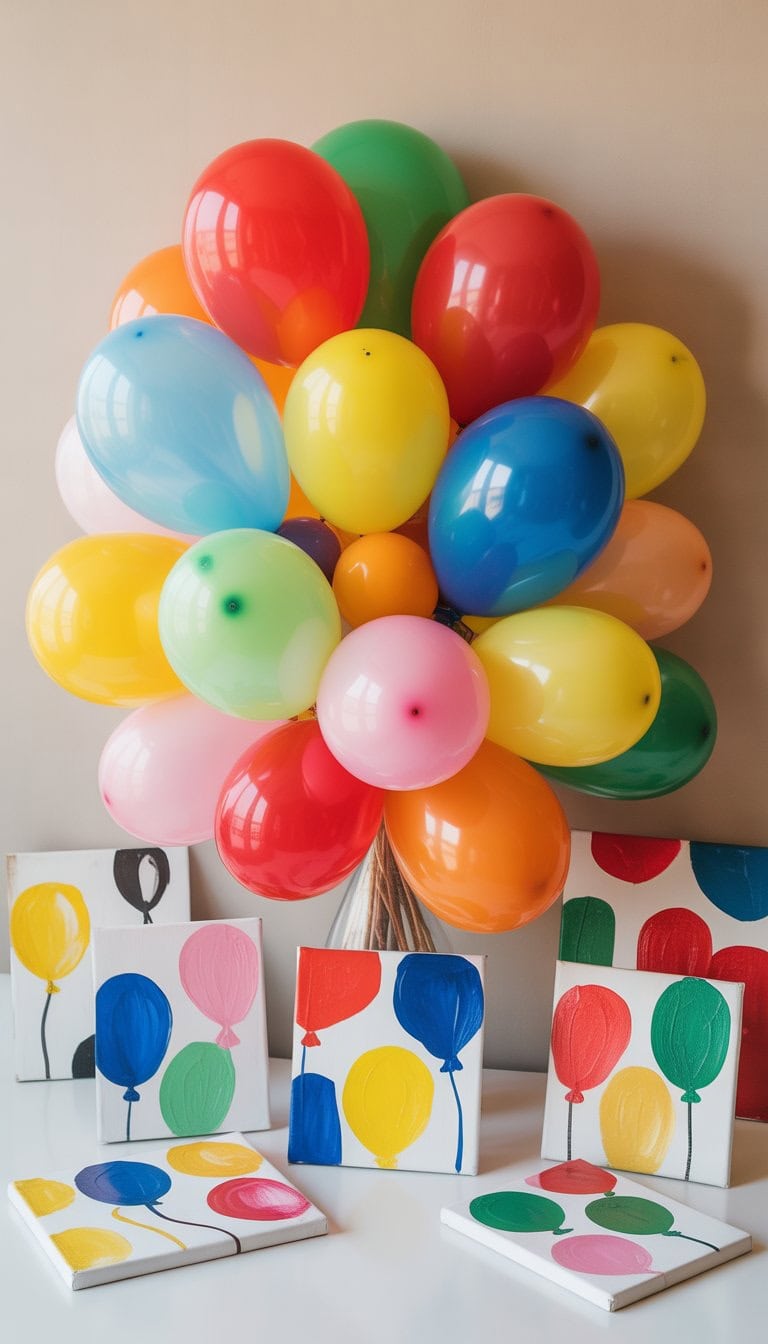
I love painting a colorful balloon bouquet because it’s fun and brightens up any space. The idea is simple but eye-catching. I start with a white canvas and pick out my favorite bold colors.
Sometimes, I use a small balloon to dab on paint for a rounded, playful look. I like how this balloon painting technique makes each “balloon” smooth and full.
I paint strings with a thin brush, adding little curves so they look real. It’s an easy project that always feels cheerful and creative.
Rainbow Gradient Stripes
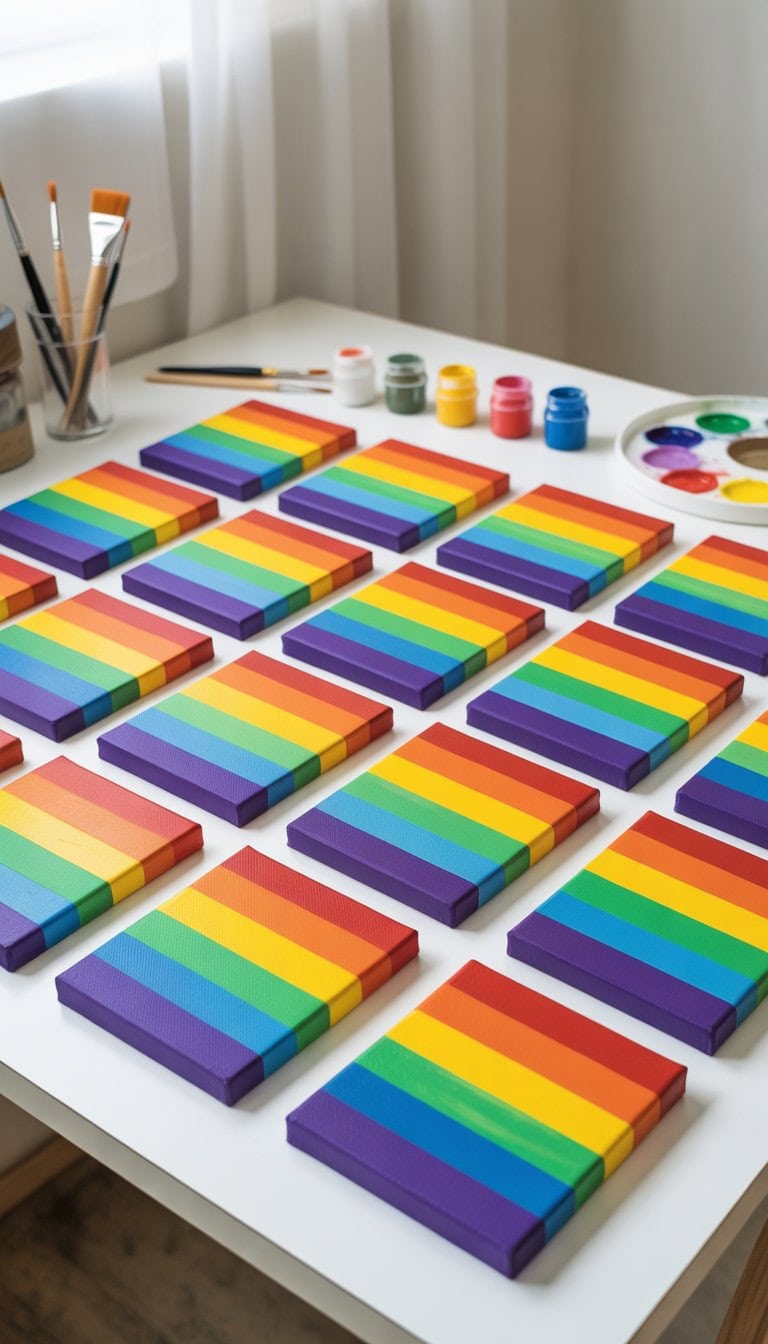
I love painting rainbow gradient stripes because it lets me play with color and blending. Each stripe flows into the next, creating a soft transition that looks bright and cheerful.
To start, I pick out my favorite colors. I line them up in the order I want. Then, I use a wide brush to paint horizontal or vertical stripes, making sure to blend where the colors meet.
It doesn’t have to be perfect. If I mess up, I just blend a little more. Watching the colors shift across the canvas is really satisfying. This idea works great for any room, and I always feel proud when I hang up my finished piece. For more inspiration, I sometimes check out easy rainbow painting ideas.
Tranquil Forest Scene
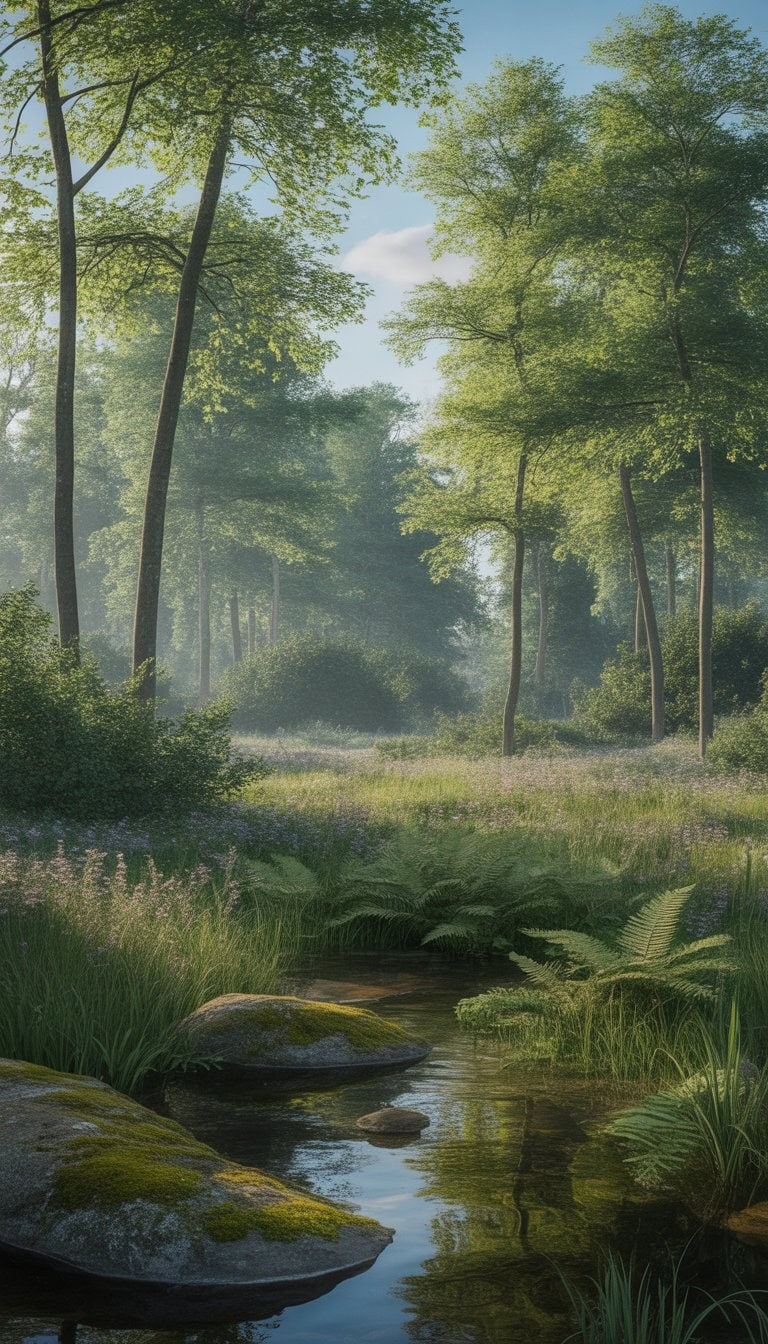
I love painting tranquil forests because they feel peaceful and let my mind relax. Trees, green leaves, and sunlight help me create a calm mood with just a few colors.
To start, I paint a soft background using light greens and blues. I use gentle brush strokes to form trees and add a path, which makes the forest look more real.
When I want extra inspiration or steps, I watch tutorials like this easy acrylic painting for beginners on YouTube. It helps me see how simple details can make my painting shine.
Sunflowers with Thick Paint Texture
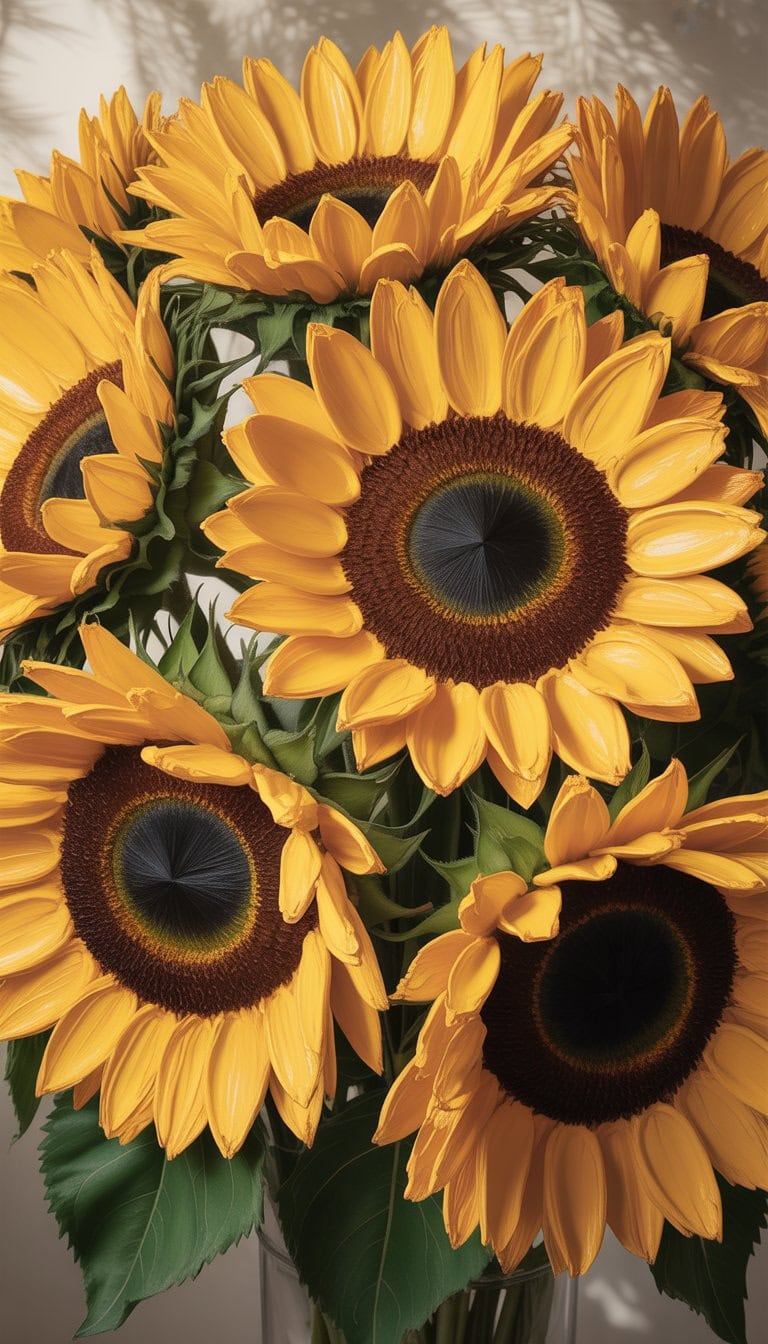
I love painting sunflowers because their bright petals make any canvas pop. To make them stand out even more, I like to use thick paint and layer it on with a palette knife. This gives the flower a rich, raised look you can actually feel.
It’s so much fun to play with texture and bold colors at the same time. If you want to try this at home, there are great step-by-step videos that show how to create a textured sunflower painting.
Just grab your favorite yellows, whites, and browns. Add each petal by dabbing and spreading the paint thickly. There’s no need to worry about being perfect—the texture brings your sunflower to life.
Whimsical Animal Faces
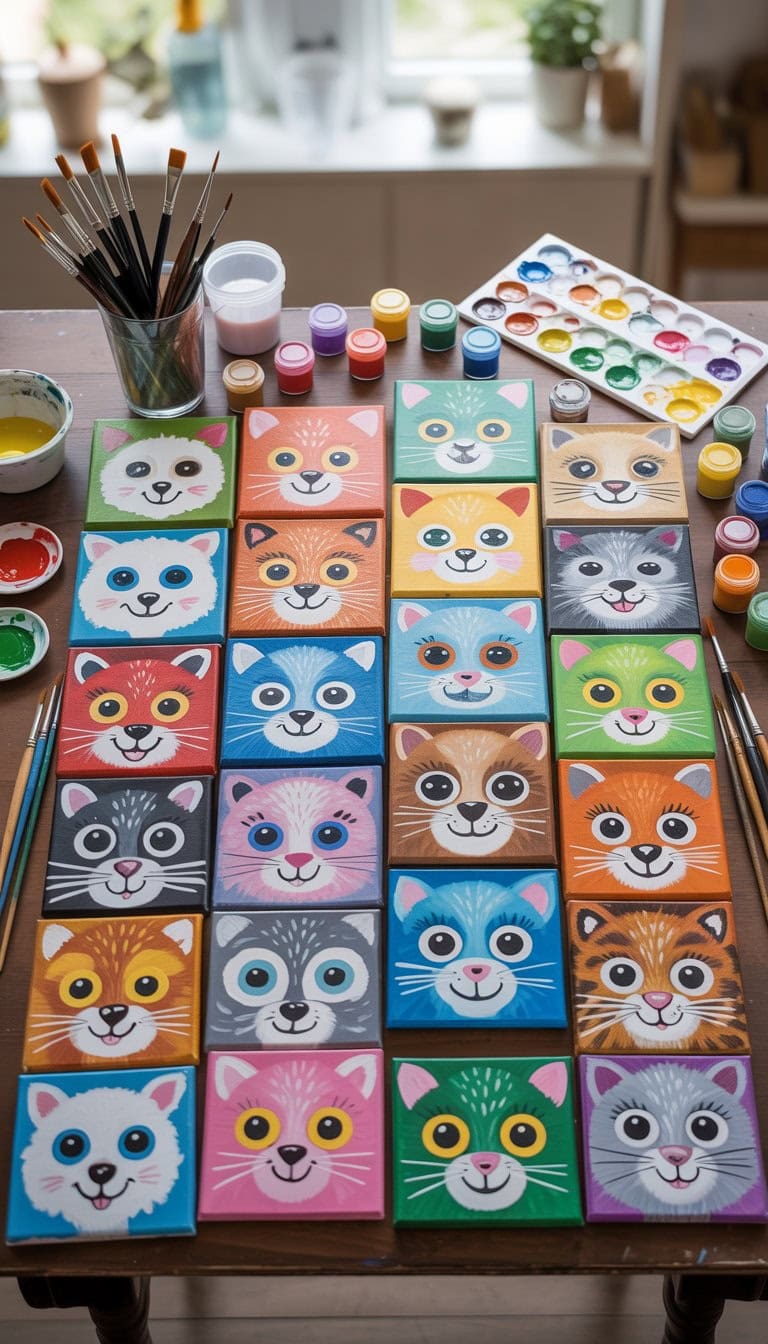
I love painting animal faces because they always make me smile. Whimsical faces let me add bright colors, big eyes, and silly expressions.
Sometimes I paint a cheerful cow or a curious giraffe. I keep my shapes simple and let my imagination guide me.
This style is perfect for beginners. I get ideas from fun projects like these whimsical animal paintings and easy canvas tutorials. Mistakes even add to the charm, so I never worry about being perfect.
Easy Fruit Still Life
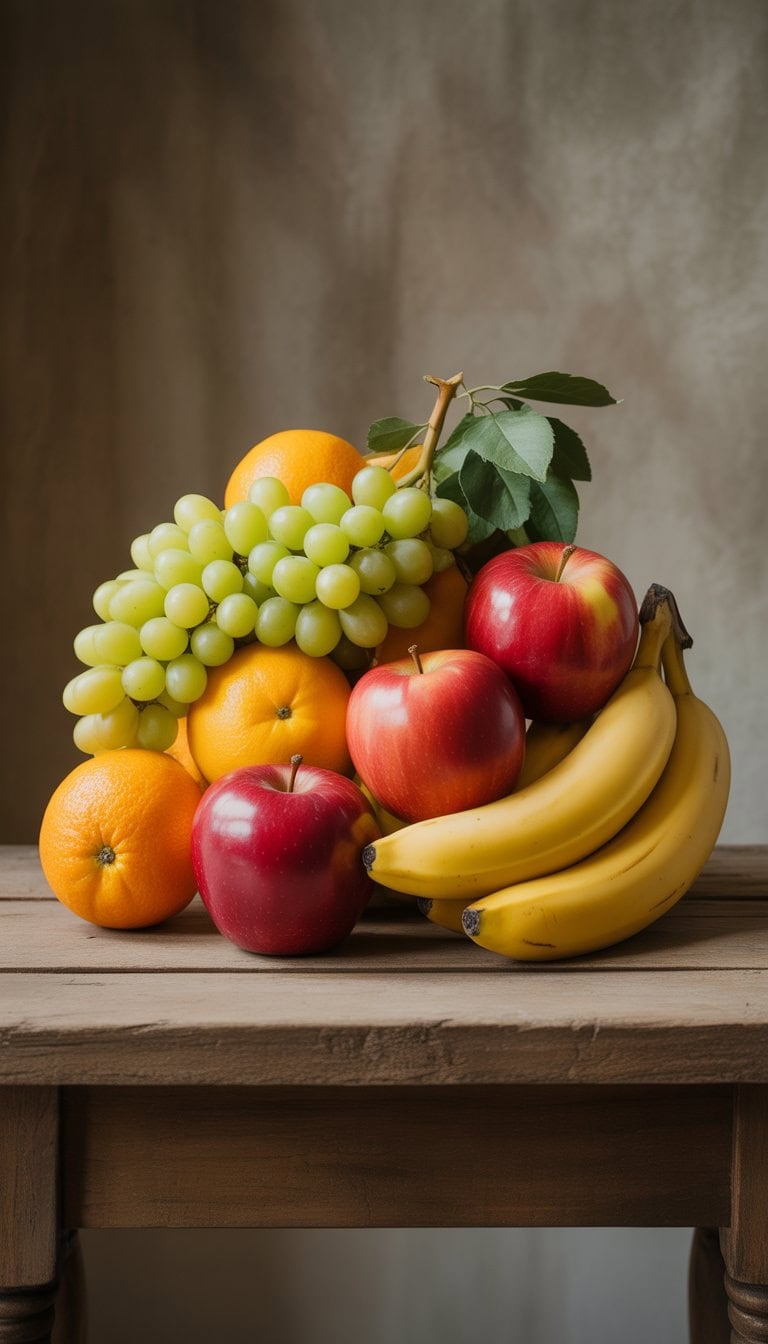
I love painting fruit because it’s simple, colorful, and perfect for learning. For my first try, I usually pick apples, oranges, or strawberries since their shapes are easy to sketch.
Acrylic paints work great for this project. I start by arranging fruit on a small plate or bowl and look closely at the light and shadows.
Sometimes, I follow step by step tutorials online to get inspired or learn new techniques. Layering colors helps me add depth and make my painting pop.
If you want more ideas, check out beginner videos that guide you through each step.
Mixed Color Splatter Canvas

I love making a mixed color splatter canvas because it looks fun and unique every time. First, I pick a few of my favorite acrylic paints. Then, I dip a brush into the paint and flick it over the canvas. Each flick adds bright dots and lines.
Sometimes, I water down the paint so it splatters more easily. I like to layer different colors to make new patterns. This style doesn’t need perfect shapes, so it feels relaxed and creative.
If you want to see how it’s done, check out this helpful guide on splatter painting techniques.
Peaceful Beach Scene
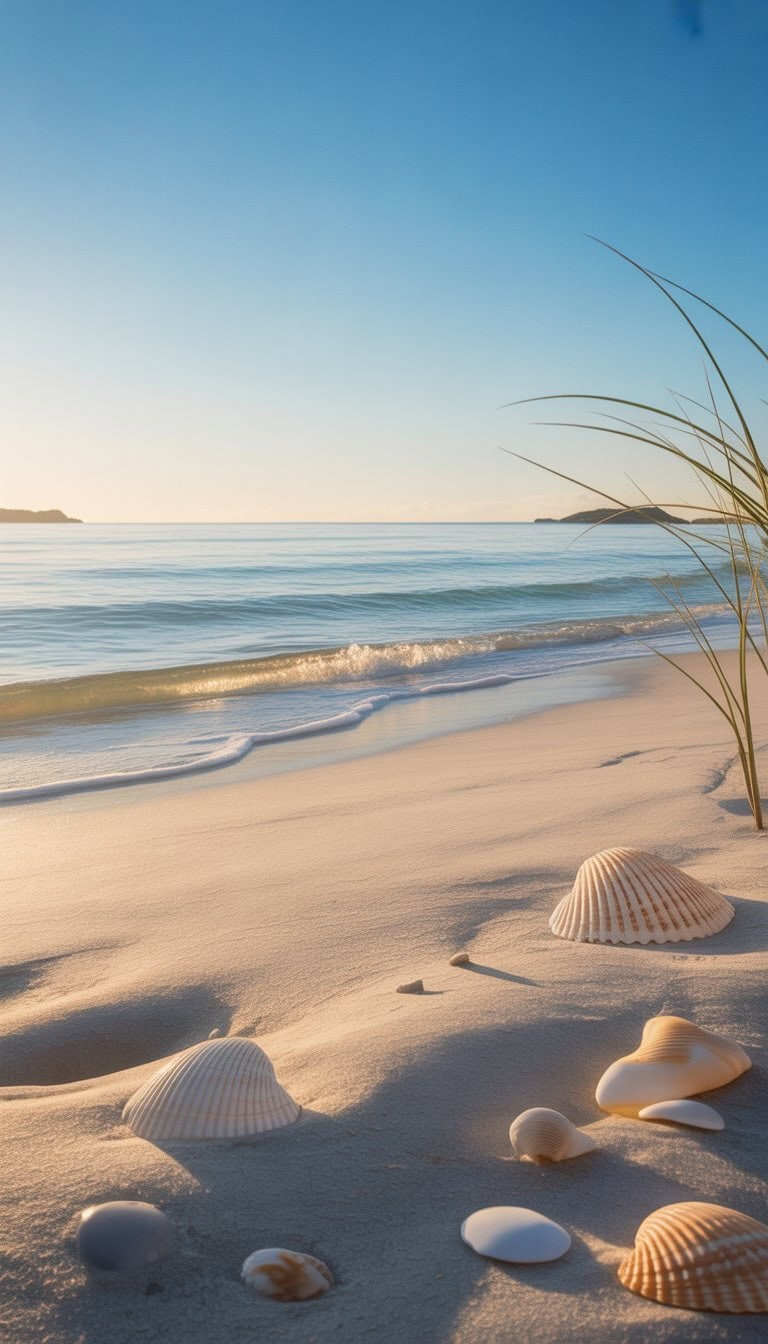
When I want to relax with a painting, I always come back to a beach scene. It’s easy to start with gentle, soft blues for the sky and a few wavy lines for the ocean.
I dab shades of yellow and white for the sand. Sometimes I add a tiny palm tree or a few footprints for detail.
Following a simple guide can help a lot, especially if you’re new. I like the easy instructions in this step-by-step beach scene tutorial. It’s a calm way to practice blending and brush control.
Cute Mini Mandalas
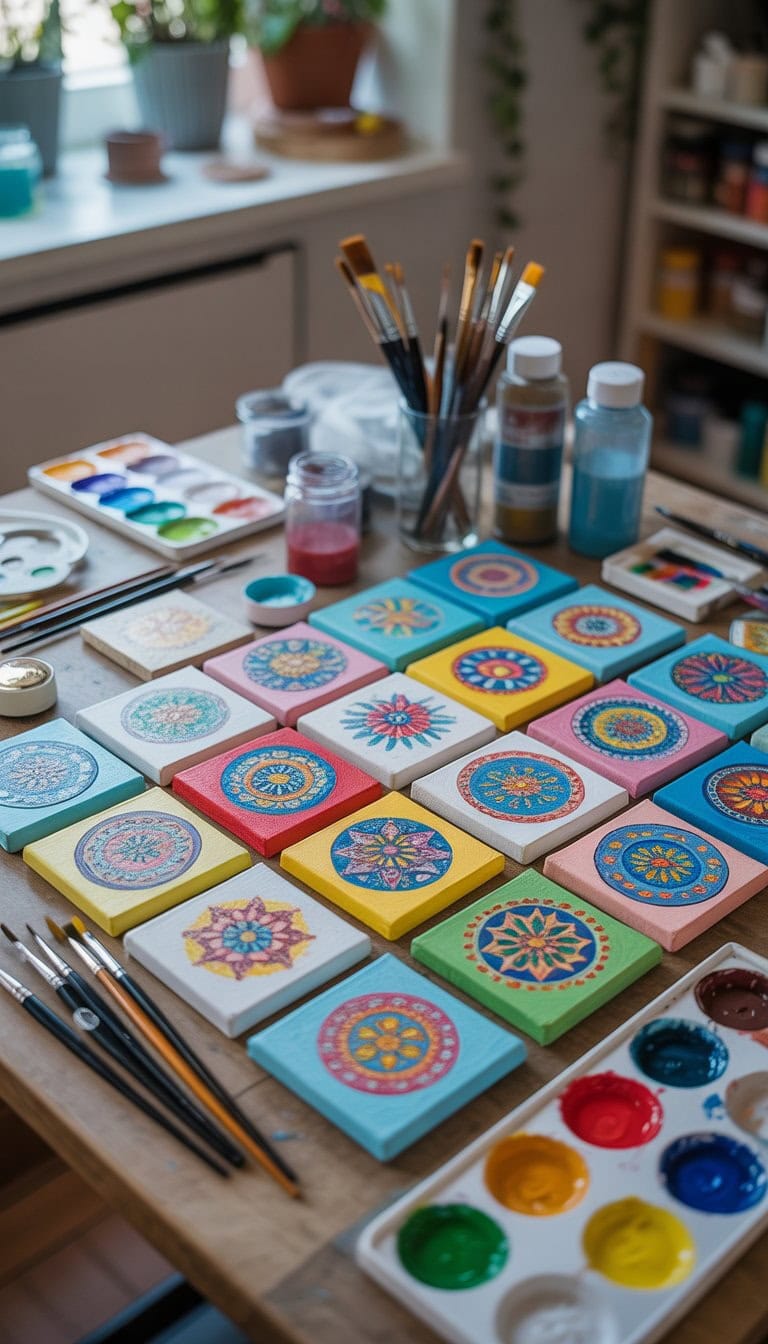
I love creating cute mini mandalas on small canvas squares because they are quick and relaxing. These little paintings use simple patterns, like dots and circles, and don’t need any fancy tools. I start in the middle, then work my way out with bright colors I enjoy.
Sometimes, I get inspiration from mandala art boards and beginner painting tutorials online. Using a small brush, I focus on making each line and dot neat. These tiny mandalas look great grouped together or as a sweet gift for a friend.
Bold Inspirational Quote
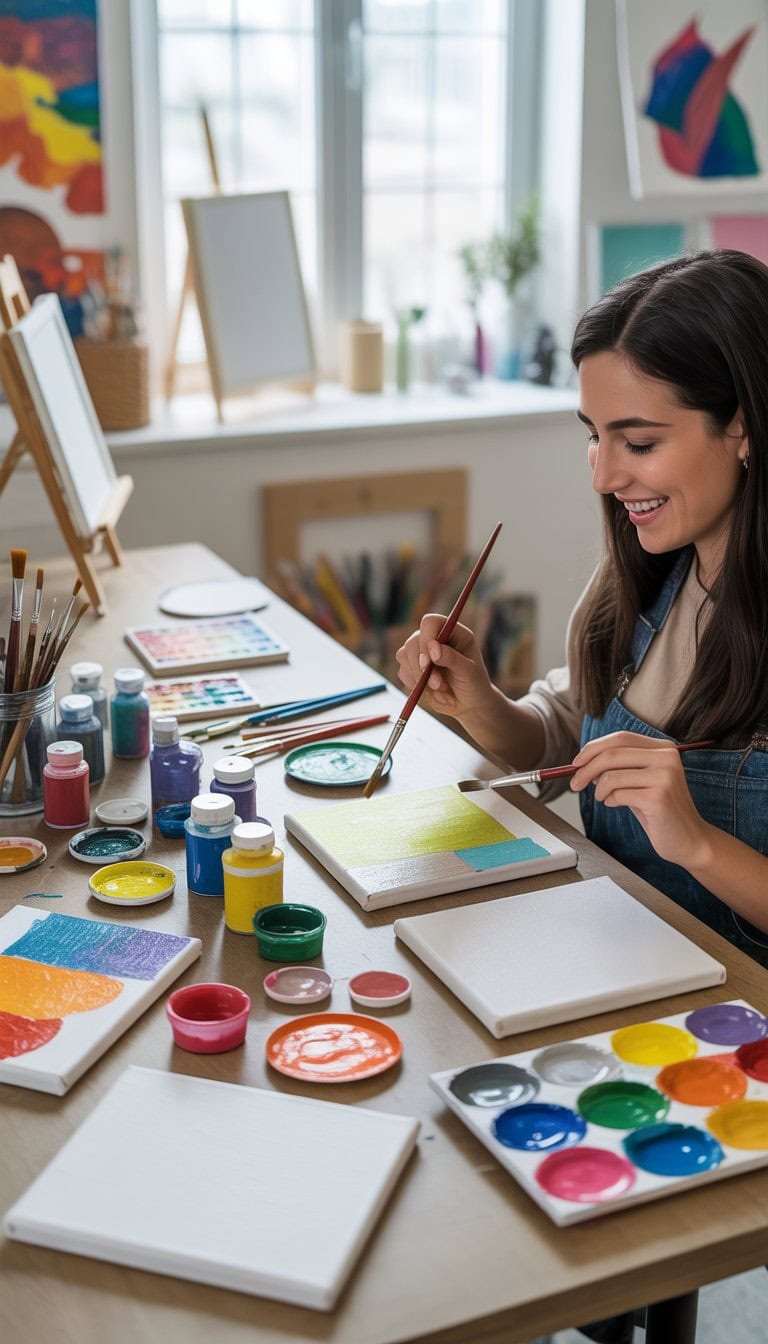
When I want to give my canvas personality, I choose a bold quote that means something to me. Simple phrases like “Dream Big” or “Make Today Count” look great in thick, clear letters.
I like to use bright colors for the background. Sometimes, I even paint a color block or soft pattern behind the words for extra impact.
Painting quotes helps me feel motivated every day. It’s an easy and creative way to add encouragement to my space. If you want more ideas, you can find lots of easy canvas painting with quotes online.
Mountain Peak with Snow Caps
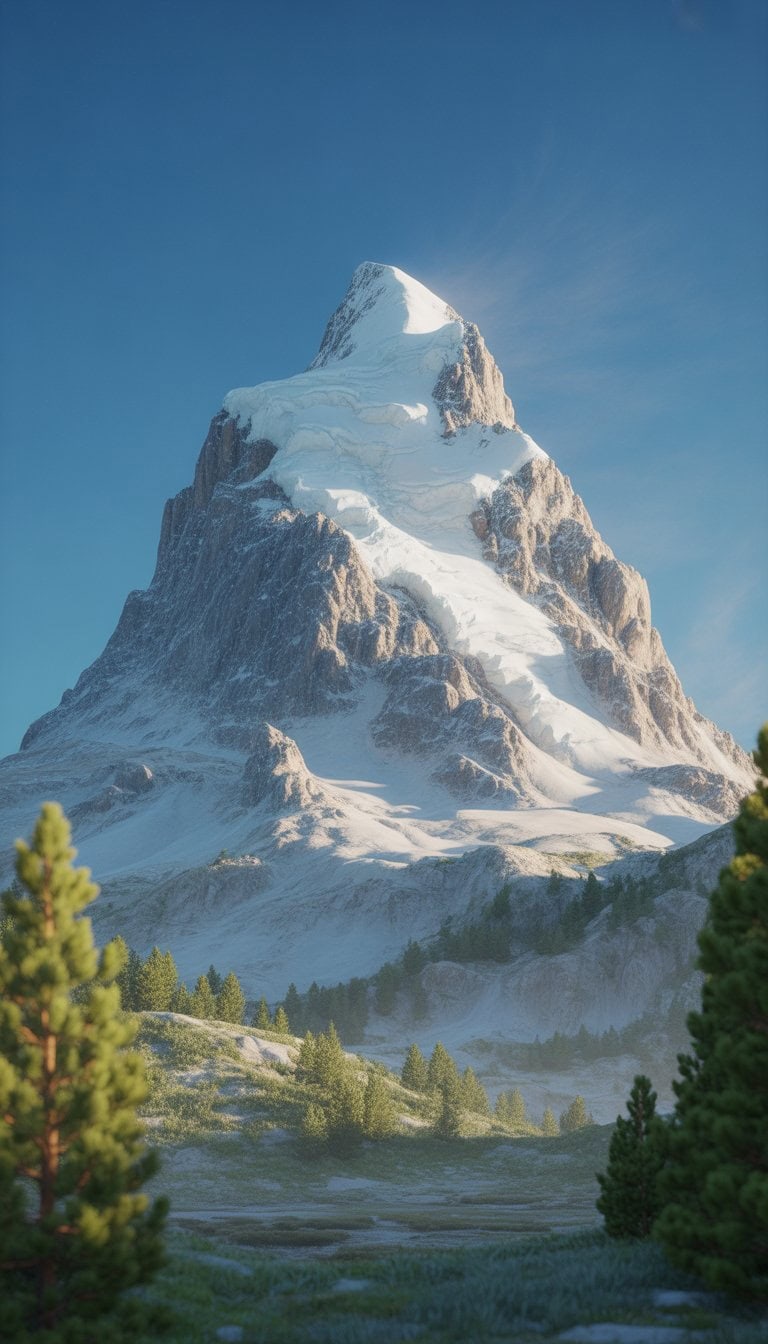
I love painting mountain peaks with bright, snowy tops. It’s a classic scene for anyone starting out with canvas art. The bold shapes and simple colors are perfect for building your confidence.
First, I sketch the shape of the mountain using a pencil. Then, I paint the main mountain with a dark gray or blue.
With a small brush, I gently add titanium white to the peaks for the snow. I focus on one side of each peak for an easy, realistic effect.
This project never gets old for me. If you want more details on technique, check out this step-by-step acrylic painting tutorial for snowy mountains.
Floating Hot Air Balloons
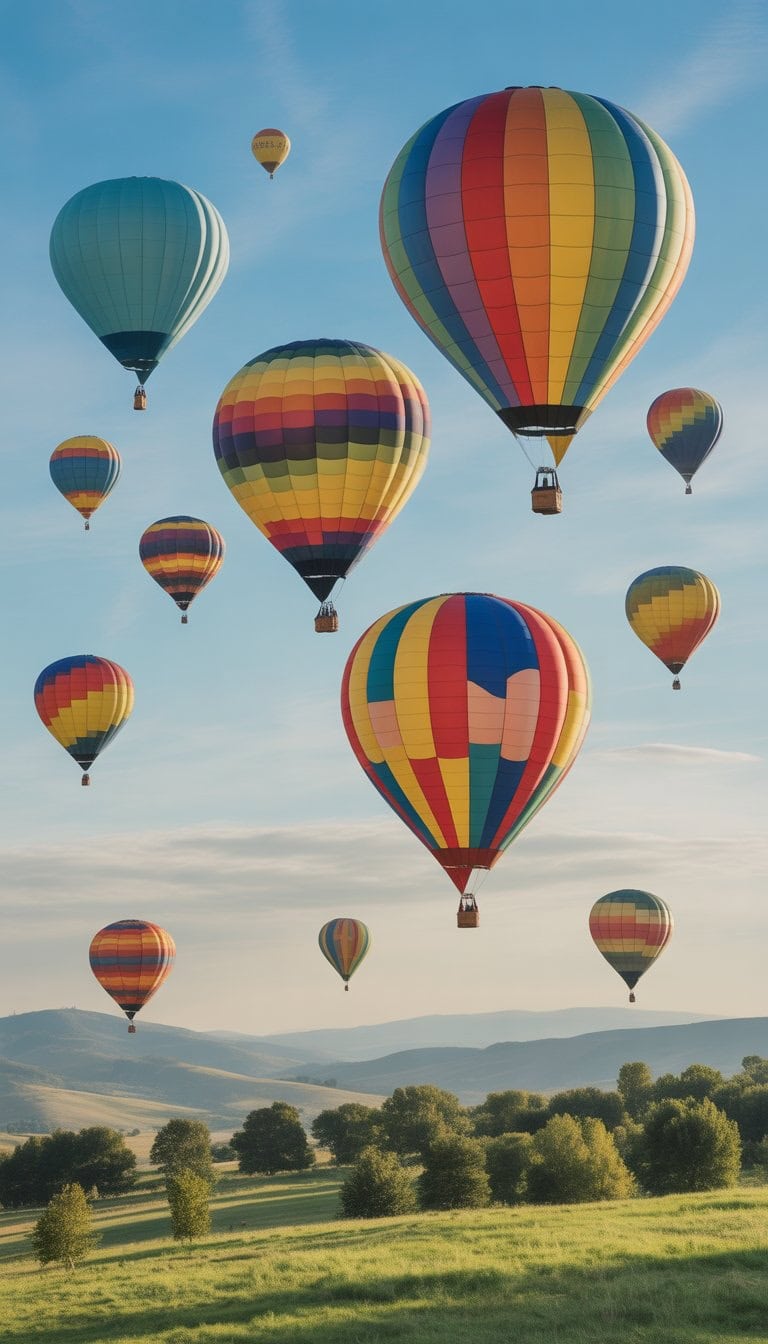
I love painting hot air balloons because they bring a sense of adventure and wonder to any canvas. Their round shapes and bold colors make them simple and fun for beginners like me.
I start by painting a light blue sky or even a warm sunset. Then, I add colorful balloons using smooth, curved strokes. Sometimes, I experiment with different patterns and color combinations.
If I want extra inspiration, I watch step-by-step videos like this easy hot air balloon acrylic painting tutorial. Each time I paint these balloons, my confidence grows, and the sky feels limitless.
Simple Leaf Silhouettes
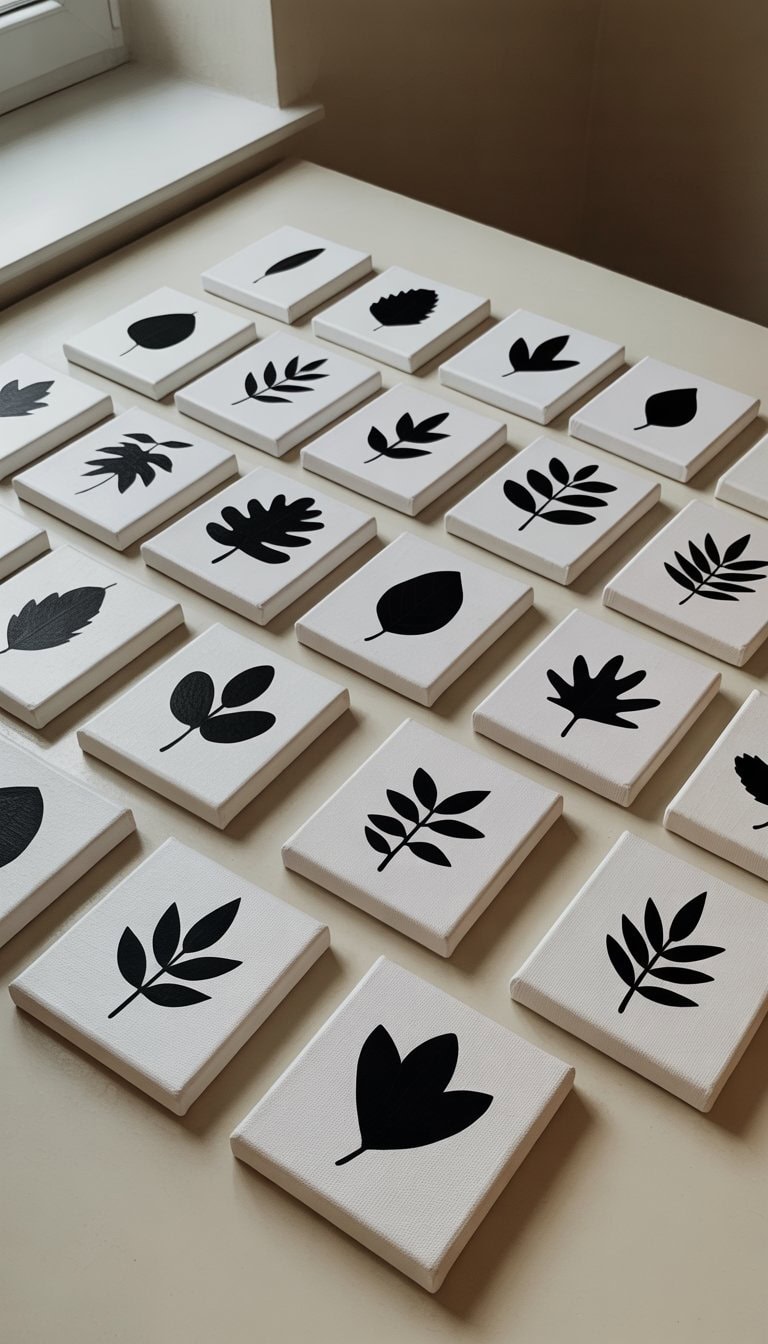
I enjoy making leaf silhouettes because they are quick and easy for beginners. I just grab a real leaf from outside and hold it flat against my canvas.
Then I use a sponge or brush to paint around the edges of the leaf. When I lift the leaf away, the shape is crisp and clean.
Sometimes, I use different colored backgrounds or add more leaves for variety. It’s a relaxing process and helps me focus on shapes and negative space.
If you want more ideas, using leaves for painting is a fun trend you can explore at Canvas painting with leaves.
Essential Supplies And Setup
When I get ready to paint, I like to keep things simple and organized. The right supplies give me the freedom to relax and let creativity take over, instead of worrying about what I’m missing.
Choosing The Right Canvas
I always pick the right canvas based on what kind of project I’m working on. For beginners, a pre-stretched, primed canvas works best. It saves time and mess because it’s ready to use straight out of the package. These usually have a layer of gesso, which keeps paint from soaking in and helps colors stay bright.
Canvas sizes can seem overwhelming, so I focus on small or medium ones, like 8×10 or 11×14 inches. These sizes are easy to handle and don’t take up much space. If I want to experiment without spending much, I use canvas panels or canvas pads — they’re affordable and come in multi-packs.
Here’s a quick comparison:
| Canvas Type | Pros | Cons |
|---|---|---|
| Stretched Canvas | Ready to hang, sturdy | Costly |
| Canvas Panels | Low-cost, good for practice | Not as durable |
| Canvas Pads | Portable, budget-friendly | Not for display |
Must-Have Painting Tools For Beginners
Besides canvas and paint, I always make sure I have the right tools. I recommend a starter set of acrylic brushes — a mix of flat, round, and detail brushes covers almost any painting idea. Synthetic brushes work best for acrylics since they hold their shape well. I also use a palette (even a paper plate works), a cup of water for rinsing, paper towels or an old rag to wipe brushes, and masking tape for clean edges.
Here’s my basic supply checklist:
- Acrylic paint (a few primary colors, white, and black)
- Brushes (variety of sizes and shapes)
- Palette or mixing tray
- Cup of clean water
- Paper towels or rag
- Masking tape for design
If I keep everything within reach, the whole painting process feels smoother, from mixing colors to cleaning up. For a deeper look at what I always keep on hand, check out these acrylic painting starter essentials.
Tips For Mastering Your First Canvas Paintings
I know it can feel a little scary when you start a new painting. It’s normal to worry about getting everything just right. But learning how to handle mistakes and mix colors can totally change the way your art turns out.
Embracing Common Mistakes
When I first started, I made a lot of “mistakes.” Paint ran, lines looked weird, and nothing turned out like my plan. I learned that most errors can be fixed or even turned into something cool. If your paint drips or smears, sometimes it leads to happy accidents that add character to your canvas.
Instead of getting upset, I keep a damp cloth handy. If I make a big mistake while the paint is still wet, I blot or wipe it gently. Messed up a shape? I just let the layer dry, then paint right over it. Acrylic paint is great for this since it dries fast and covers well.
Here’s my short list of mistakes that helped me get better:
- Mixing too much water and making colors run (now I know when a watery wash looks cool)
- Painting outside the lines (sometimes makes the background more interesting)
- Using the “wrong” brush, but discovering cool new textures
I remind myself: mistakes mean I’m learning.
Blending Colors For Stunning Effects
Getting colors to blend smoothly takes a bit of practice, but it’s worth it. I start with only a few paints so I can see how each color looks on canvas. Using three to five colors and creating shades by mixing, like suggested here, helps me not get overwhelmed.
I wet my brush slightly, then add my first color. While it’s still wet, I pick up another shade and gently sweep it into the first. Using soft, back-and-forth strokes makes the colors melt together instead of looking patchy. If the paint starts to dry, I mist the canvas lightly or work faster.
Sometimes I use my finger or a clean, dry brush to soften the edge between colors. This trick makes sunsets, skies, and waterscapes blend so nicely. If I want a bold change, I let one color dry fully, then paint the next over it for sharp edges.
Trying these techniques lets me play with gradients and glowing effects, so every painting looks unique.
Frequently Asked Questions
I love helping new artists get started with canvas painting. If you’re looking for easy project ideas, budget tips, or step-by-step guides, I’ve got you covered.
What are the first steps to kick off my canvas painting journey?
I always begin by getting a few simple supplies: a canvas, some acrylic paints, a set of brushes, and a cup of water. I like to start small, usually with an 8×10 inch canvas, so I don’t feel overwhelmed.
I wash my hands, cover my workspace, and pick one or two basic colors to play with at first.
How can I create simple yet beautiful canvas paintings as a beginner?
I recommend using bold shapes and big brush strokes. When I was new, I tried an abstract geometric shapes painting with only a few colors; the simple design still looked modern and eye-catching.
If I want a more organic look, I try a colorful sunset silhouette or a mountain range with broad, easy lines.
What cost-effective methods are there to obtain canvases for my DIY projects?
I shop for canvas packs at local craft stores or look for sales online. Sometimes, I buy economical multi-packs or even reuse old canvases by painting a layer of white acrylic paint (gesso) over them.
Dollar stores sometimes have small canvas boards for just a few dollars.
Are there easy objects or themes I should start with when painting on canvas?
When I needed inspiration, I began with everyday things like fruits or flowers. A bright and colorful pineapple or a simple jar of wildflowers helped me practice mixing colors and painting basic shapes.
Sunsets, mountains, and geometric patterns are also great for practicing technique at any skill level.
Can you suggest some small canvas painting ideas that are perfect for new artists?
I love creating mini artworks, like a simple mountain range or a bright floral jar on a tiny canvas.
Tiny abstract designs, colorful pineapples, and silhouettes of trees or plants are quick to finish and look great, even if you’re short on time.
Where can I find step-by-step guides to help me learn canvas painting at home?
I often visit websites like Craft-Mart and Gathered when I want clear instructions with photos.
Video tutorials and painting blogs help me follow along easily and pick up helpful beginner tips as I paint.
